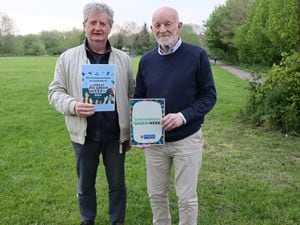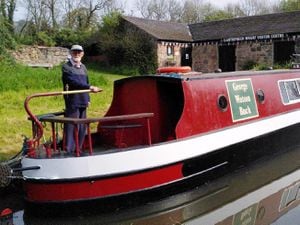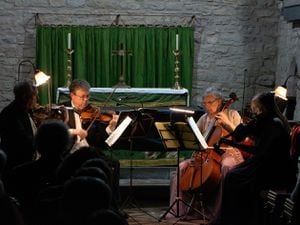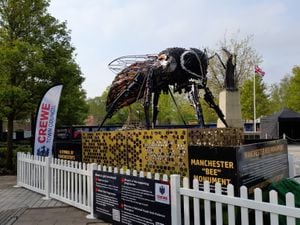Church spotlight: Holy Trinity Church, Coalbrookdale
Margaret Darlington has a simple way of describing the beauty of Holy Trinity Church in Coalbrookdale.
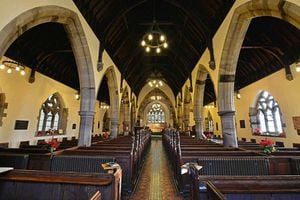
"It is like a miniature cathedral," says the churchwarden, who lives on the opposite side of the road.
"It is the first thing I see when I draw back my curtains in the morning and the last thing I see in the evening. It is a very beautiful building standing proudly overlooking an important part of the Ironbridge Gorge."
During the first half of the 19th century, Coalbrookdale was in its pomp: famous around the world for its booming iron industry, which had been the driving force behind the Industrial Revolution.
Established 1851, and completed in 1854
Main services: 11am on the second, third and fourth Sunday of the month. Evensong at 3pm in winter and 6pm in summer on the first Sunday of the month.
In the north-east of the churchyard there is a gravestone commemorating William Dempster, who carved the stonework of the church.
The most notable grave is that of Abraham Darby IV and his wife Matilda, at the east end of the church. It was cleaned and restored in 1993.
There is a memorial over the porch door to Captain Matthew Webb, the swimmer, who died whilst attempting to swim across the Niagara.
There is also a memorial is to Thomas Parker, the noted electrical inventor.[/breakout]
But there was no church. The Darby family, who had transformed Coalbrookdale from a sleepy hamlet into the cradle of industry, were strict Quakers, but that changed in 1849. Abraham Darby IV – great nephew of the man who built Iron Bridge – converted to the Church of England and was baptised at Wenlock Abbey, promising to build an Anglican church in the village.
The following year, a school room at Coalbrookdale British Boys' School was licensed for church worship, becoming Coalbrookdale's first Anglican church.
However, Darby had greater plans, and had pledged to pay £100 a year to maintain the new parish. While St Luke's Church in neighbouring Ironbridge had been built on a shoestring, Darby was determined that the new church for Coalbrookdale would be constructed on a much more lavish scale.
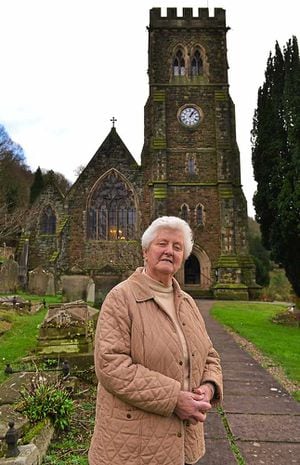
The foundation stone was laid by Darby's wife, Matilda Frances, on December 11, 1851, and the completed building was consecrated by the Bishop of Hereford on July 25 1854.
By this time, the simpler Early English style was out of fashion, and the Anglo-Catholic revival, spearheaded by the likes of Augustus Pugin, meant that the Gothic style was very much in vogue.
The church's links to the Darby family and the Coalbrookdale Company can be seen throughout the building. The main entrance consists of a pair of locally made cast iron gates – and a number of grave markers are made with locally-cast iron too.
Designed by Annesley Voysey of London architects Reeves and Voysey, the church is of the decorated 14th century style consisting of a chancel, nave, eight bays, a west porch and a massive embattled west tower. The three-dial tower clock was built by public subscription, and the church would become known as The Jewel of the Dale.
A favourite feature of Margaret's is the peal of 10 bells.
"It is a particular delight for me and many others to hear our fine peal of bells ringing out regularly," she says.
When the church was first built, a peal of eight bells was hung, donated by Alfred Darby, the founder's brother. Two more bells were added when they were restored in 1925 by public subscription in memory of Maurice Darby, great nephew of the founder, who had been killed in the First World War.
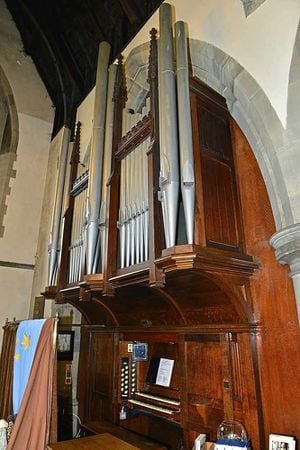
Abraham Darby's sisters also made a massive contribution to the church, with Mary providing the organ and Deborah giving £1,000 to the project.
The original organ was built by the highly regarded JW Walker and Sons, and was located in the north-west of the church. For a time it was moved to the opposite corner, but when it was returned to its original position in 1931, it caused some consternation for church patron Muriel Cope-Darby.
Mrs Cope-Darby had very specific views about the tempo of hymns, and wished to let the organist know if she disapproved. In order that she could make her feelings known, her pew was fitted with a small foot pedal which illuminated a light on the organ console.
The pedal remains today, although much to the relief of the current organist, it is rarely used.
At the east end is a striking altar window which depicts the Crucifixion against a rich background of trees and flowers. This had been donated in 1900 by Abraham Darby IV's widow, in memory of her husband.
Below the window, mounted on fine Ashburton marble steps and locally made tiles, is the altar with a silk brocade frontal.
On the reredos is a silver cross given in memory of the Rev CB Crowe, a former vicar of the church, as well as candlesticks commemorating Freda Gladys Fowler and vases in memory of William Humphreys.


